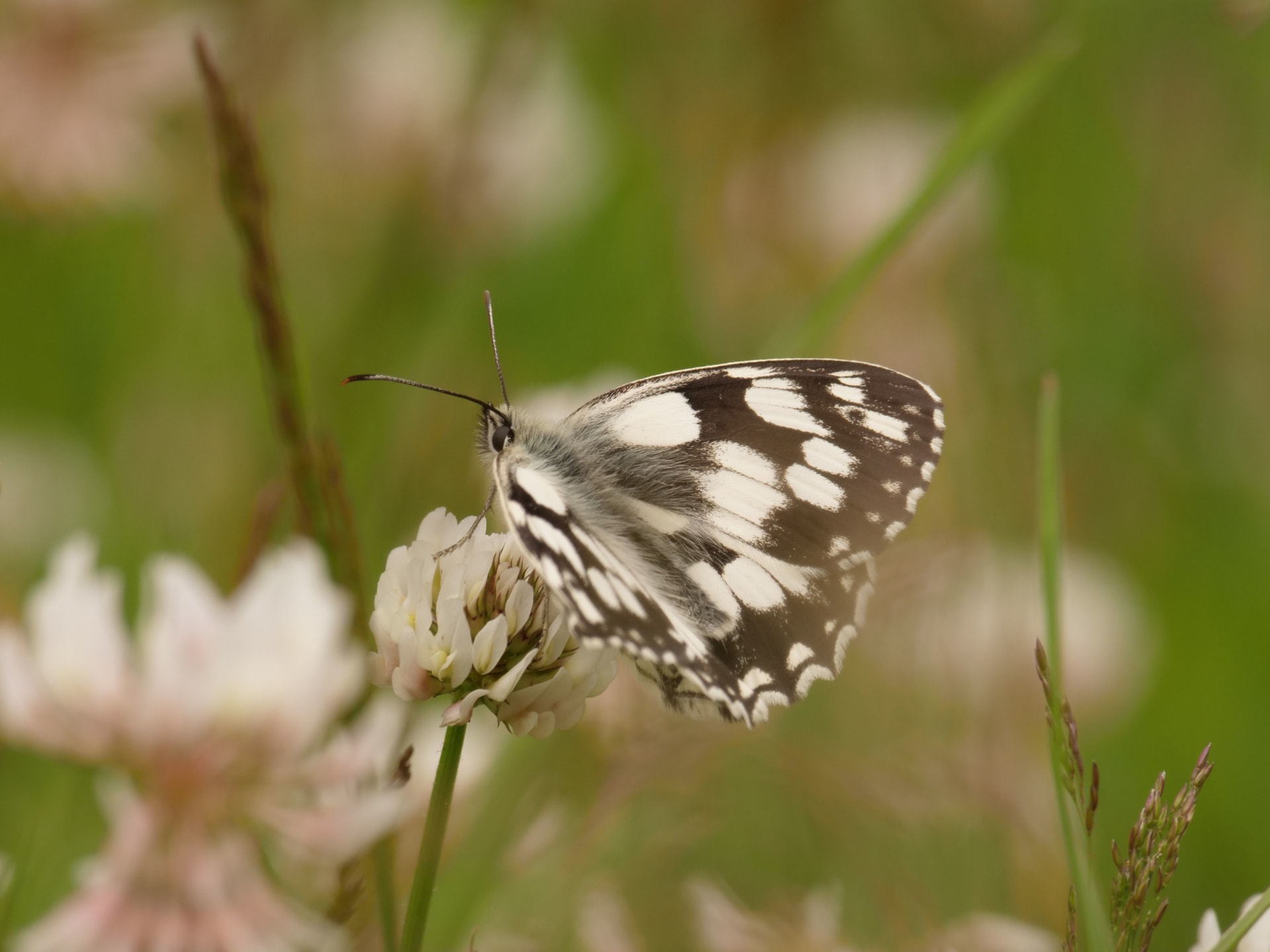The first butterfly of the year is always a high point for me. It means it’s a sunny day for one, but more importantly, that the long, warm days of summer are on their way. It’s usually a Brimstone in March. A flash of dusty acid yellow flitting amongst the new buds in search of early nectar.
It is in summer, though, that we get that wonderful sight of butterflies dancing from blossom to blossom in a wild flower meadow. Their bright, jittery flutter makes chasing them irresistible to small children – many of our summer family picnics have ended up in a giggly heap of grassy kids after an erratic pursuit. It also makes butterflies frustratingly elusive to follow and capture on camera; at least not without a lot of patience.
Despite, or perhaps because of this, butterflies are possibly our best-loved insect. Their delicate beauty is emblematic of a British summer, but they’re not as common a sight as they used to be. Where once there may have been clouds of browns, blues, fritillaries and hairstreaks fluttering in grassland meadows, they’re now in ones and twos. Not only valuable for their beauty, butterflies play an important role in our ecosystems as flower pollinators and food for birds, bats and other insect-eating mammals.
In the last 50 years, three quarters of the UK’s butterfly species have declined since monitoring began in 1976 (according to Butterfly Conservation’s most recent State of the Nation report). This is mainly due to the places where they live being repurposed for other uses, such as building development, agriculture or recreation.
It cannot be denied, though, that some of these butterflies can be real divas about their requirements: they can be incredibly specialised about where they live and what they eat. What’s more, they might have different requirements for each stage of their development.
Take, for instance, one of our rarer species, the Duke of Burgundy – a small orange and brown butterfly. His Grace likes a west-facing slope with limestone soils and a good supply of cowslips for the caterpillars to eat. There also needs to be plenty of dense tussocks of grass, as that’s where they pupate and spend the winter. And then, as adult butterflies, they require well-spaced patches of scrub for the lazy males to loll around in dappled sun waiting for the females to flutter by – it’s quite the checklist.
Other butterflies require the presence of another creature for their survival; for instance, the butterflies who use ants as bodyguards for their young. Red and black ants look after the chrysalis of the Adonis blue butterfly, keeping it in their nest for three weeks. And, on grassland sites, yellow meadow ants protect the Chalkhill blue butterfly’s larvae from predators in exchange for the larvae’s sugary secretion which makes the ants taste bitter to birds.
At the National Trust, our wildlife advisers and rangers work with partners at Butterfly Conservation, Natural England and Wildlife Trusts in order to manage particular sites to benefit butterflies. We do have a few colonies of Dukes of Burgundy in the Chilterns and our rangers put a lot of thought into the regime of cattle grazing, hand-coppicing and scrub clearing that will keep his Grace in cowslips, as well as ensuring Adonis is supplied with ants.
There are some great summer walks for butterfly spotting at National Trust places around Oxfordshire. Greys Court, near Henley-on-Thames incorporates a wildflower meadow into its walled garden and Watlington Hill, White Horse Hill and Buscot and Coleshill are countryside sites in Oxfordshire with acres of wildflower-rich meadow which are free to enjoy for everyone (no membership required).
All of these places will become even more fluttery as butterfly conservation work continues. Why not use our spotter guide to chalk grassland specialists on your next country walk?
Rare species
These are the species that set lepidopterists’ hearts a-flutter. Ten points if you spot any of these:
Chalkhill Blue, flies in August.
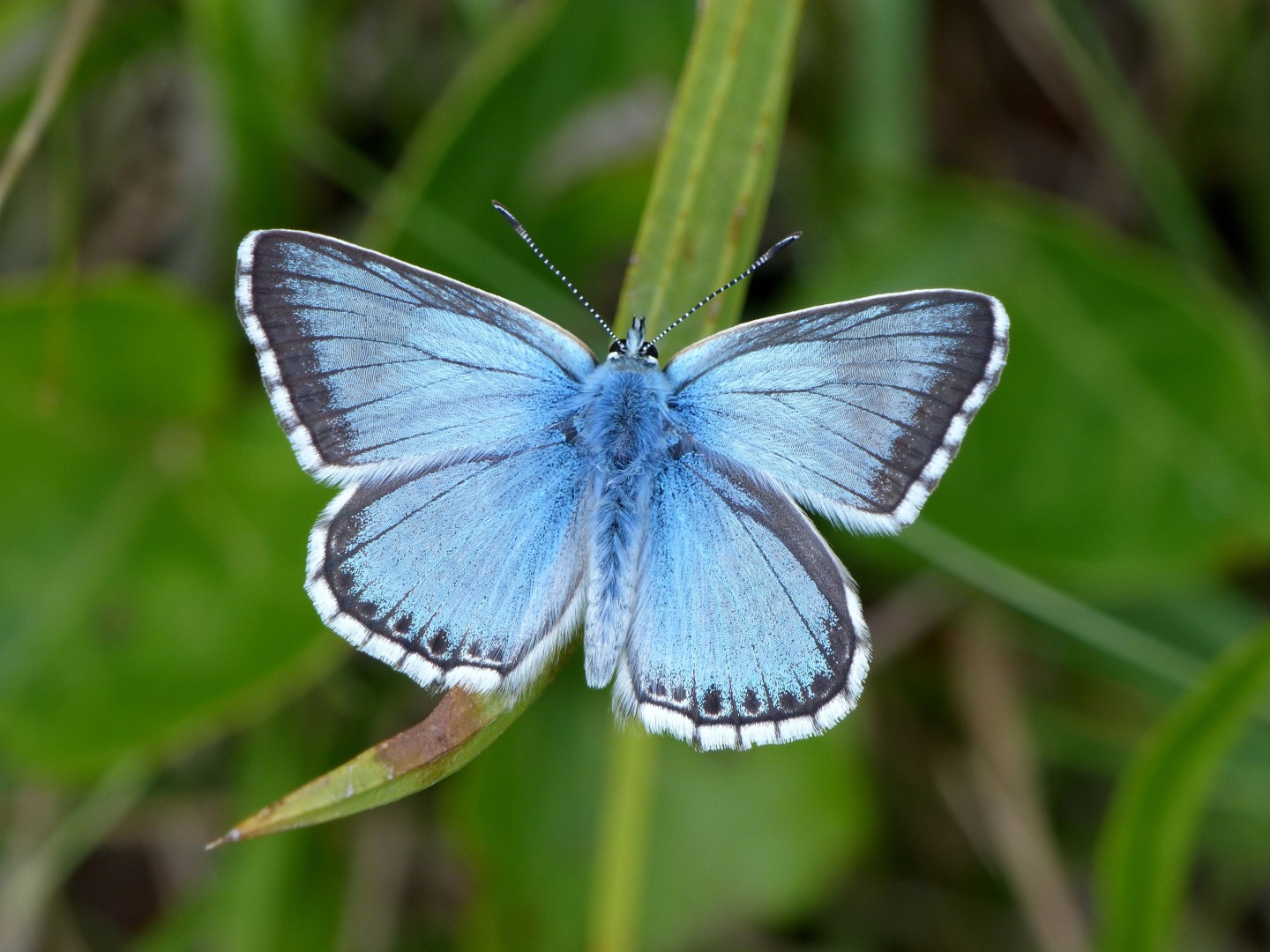
Chalkhill blue NTI Matthew Oates
Duke of Burgundy, flies in June.
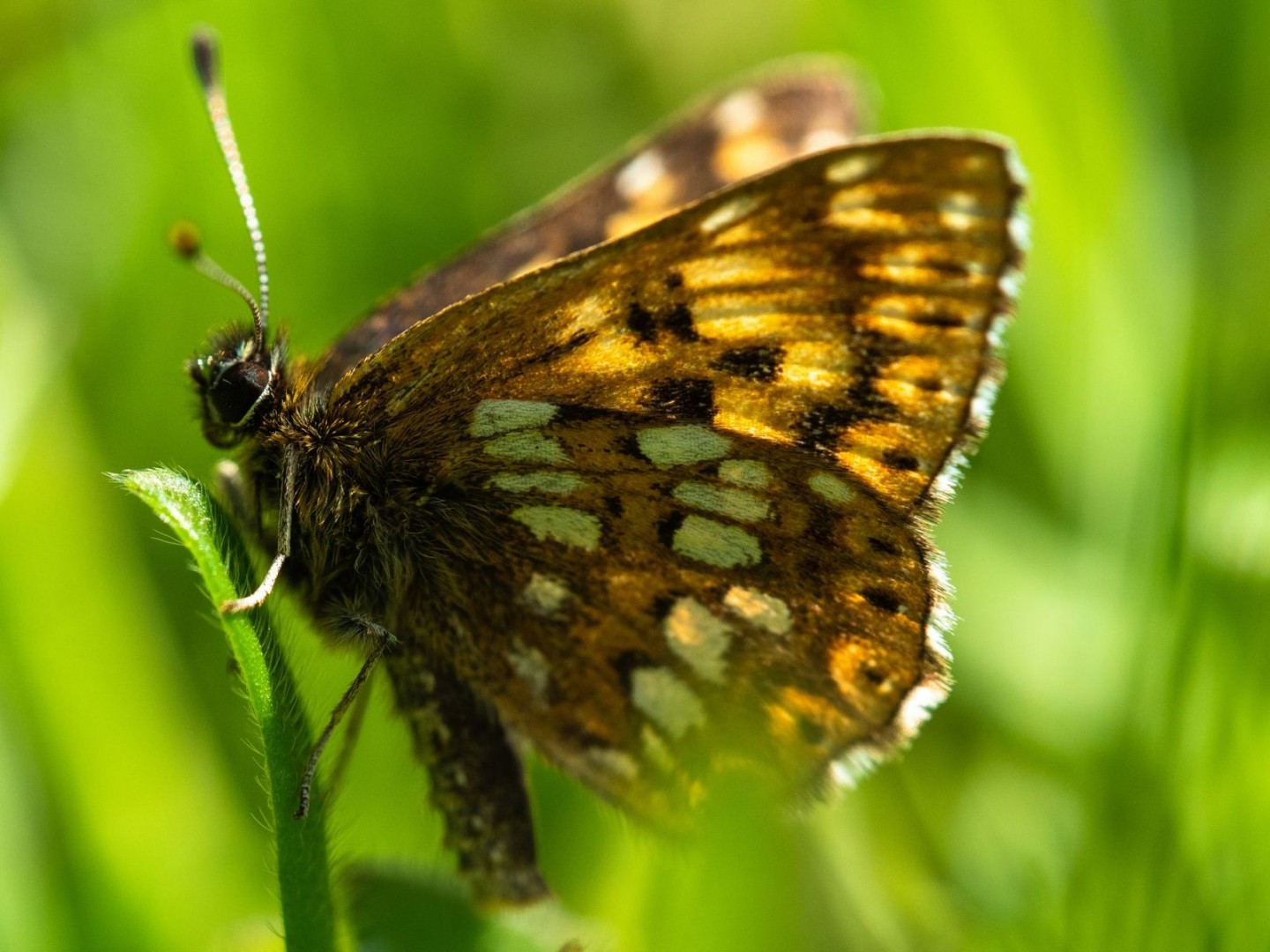
Duke of Burgundy NTI Rob Coleman
Adonis Blue, two broods, flies in June and Sept.
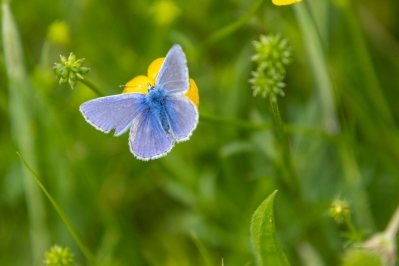
Adonis Blue NTI Chris Lacey
Dark-green fritillary, flies in July.
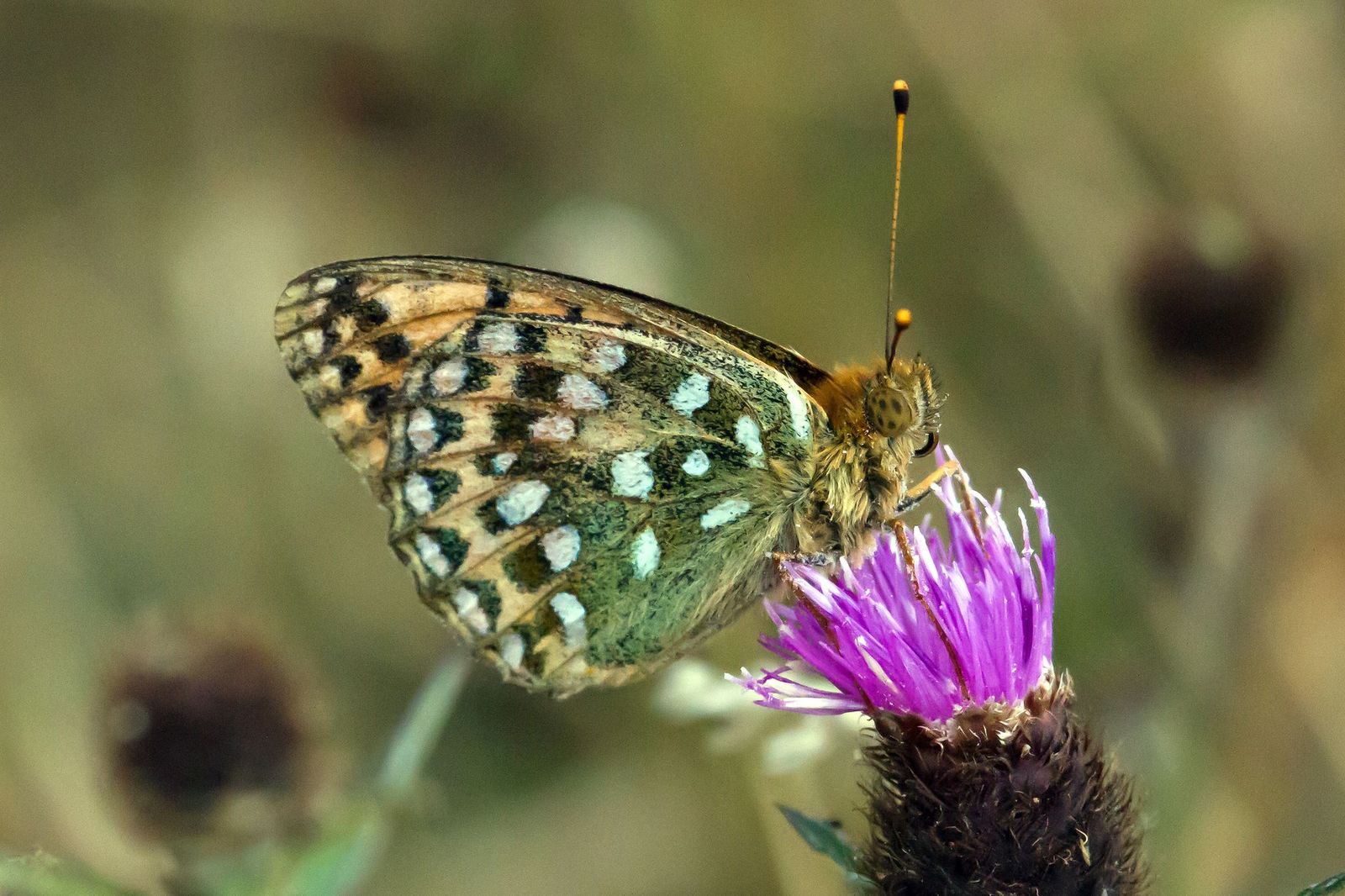
Dark Green Fritillary NTI Wilbert McIlmoyle
Common species
These are the species that you’re likely to see flitting from flower to flower on a summer walk in a flower meadow:
Small tortoiseshell, can be seen from April. Most often on a nettle patch
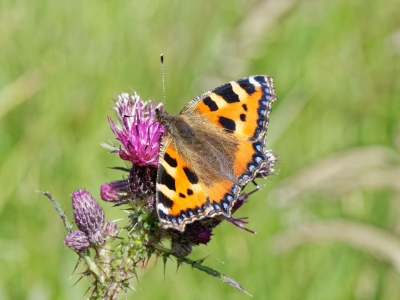
Small tortoiseshell NTI Nick Upton
Marbled white, flies in July. Distinctive and attractive, the Marbled White particularly likes purple flowers.
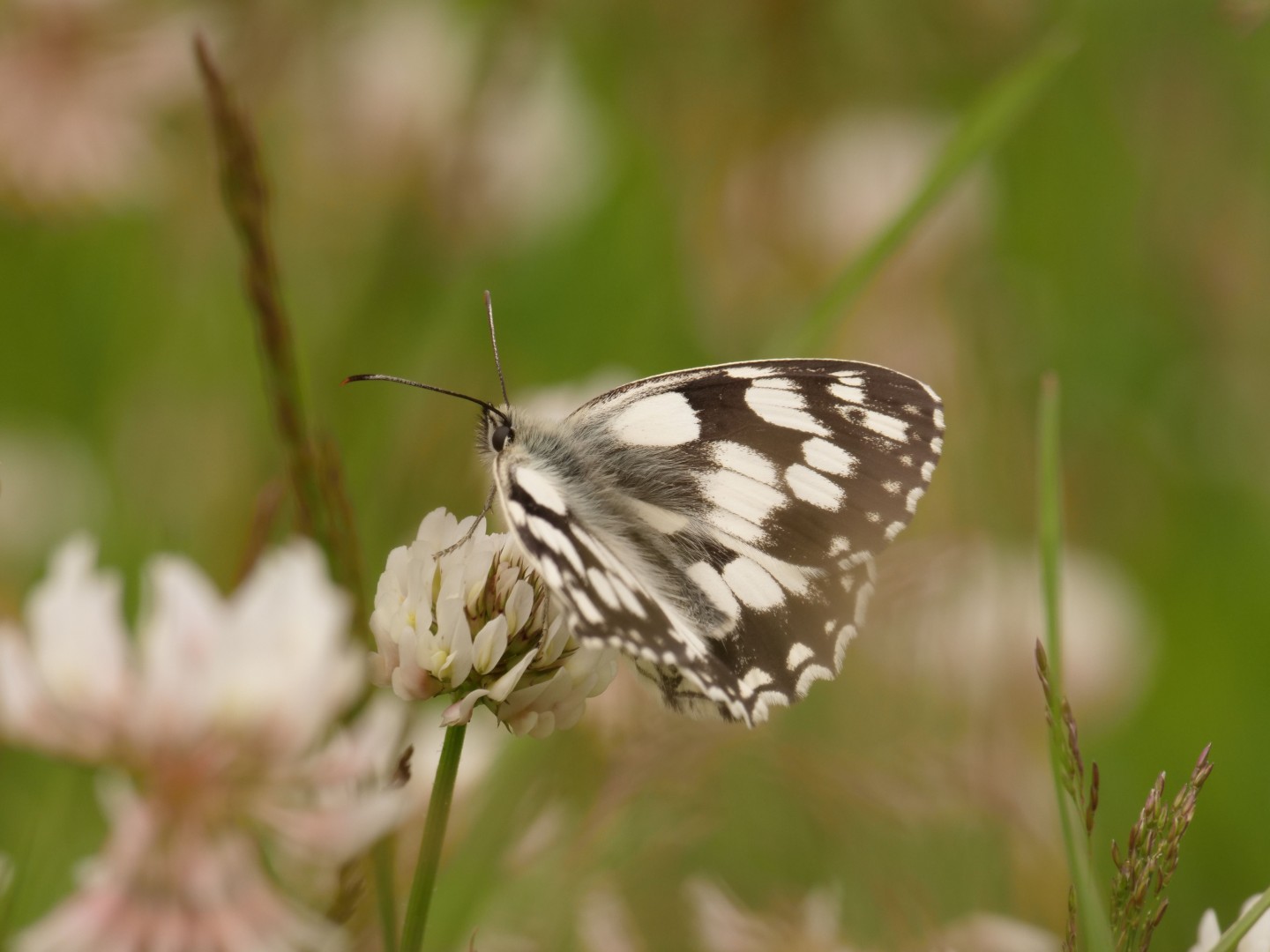
Marbled White NTI Mick Jones
Common blue, two broods, flies in May and August. Unlike Adonis and Chalkhill Blues, the dark veins do not extend into white fringes of wing margins.
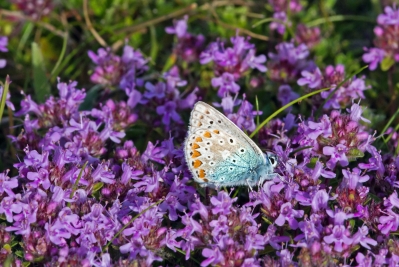
Common blue NTI Wilbery MIlmoyle
Small heath, two broods, May to September. Charming little butterfly which always settles with its wings closed, showing its underwing ‘eye’.
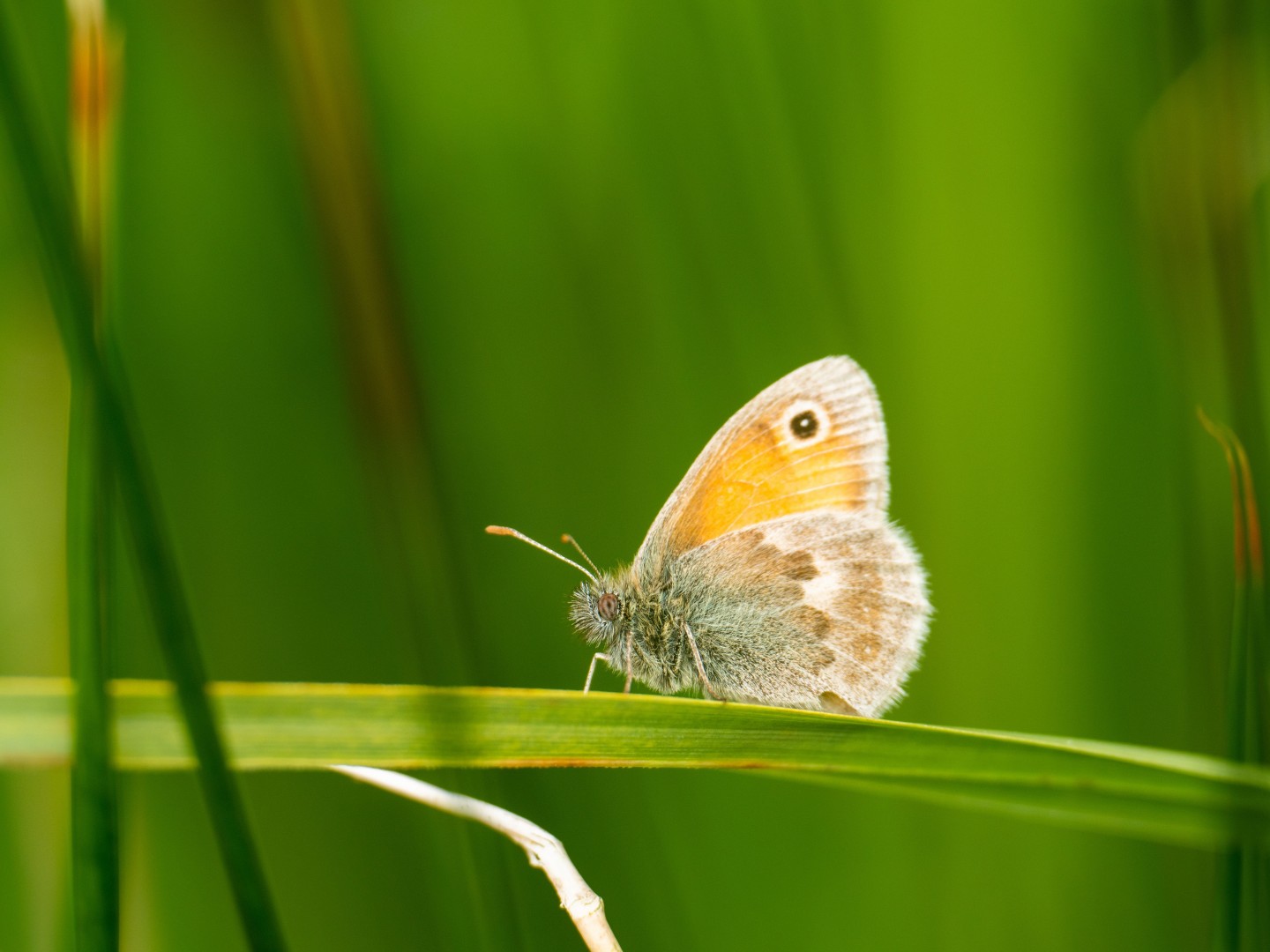
Small heath NTI Rob Coleman

